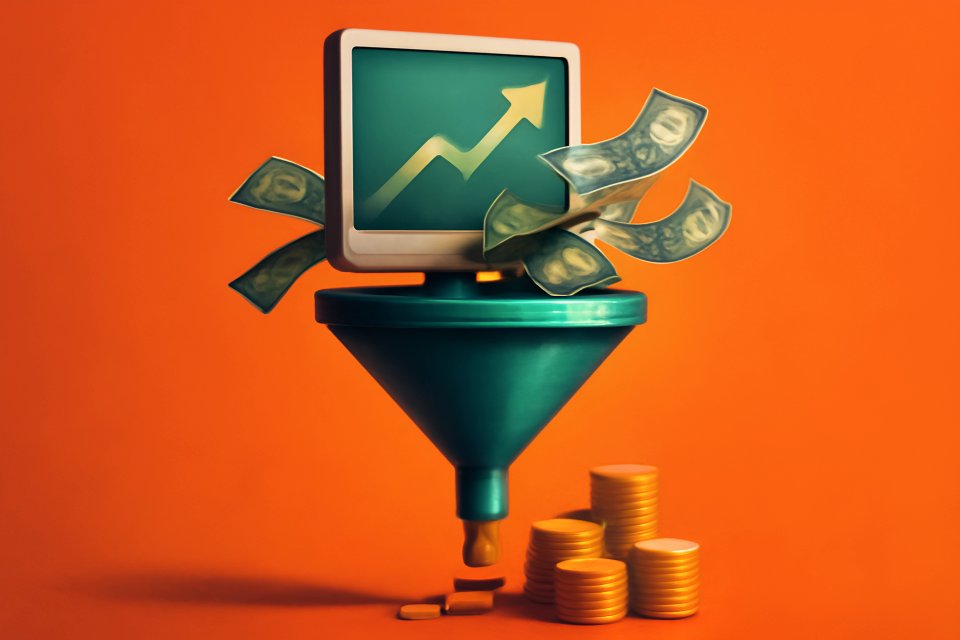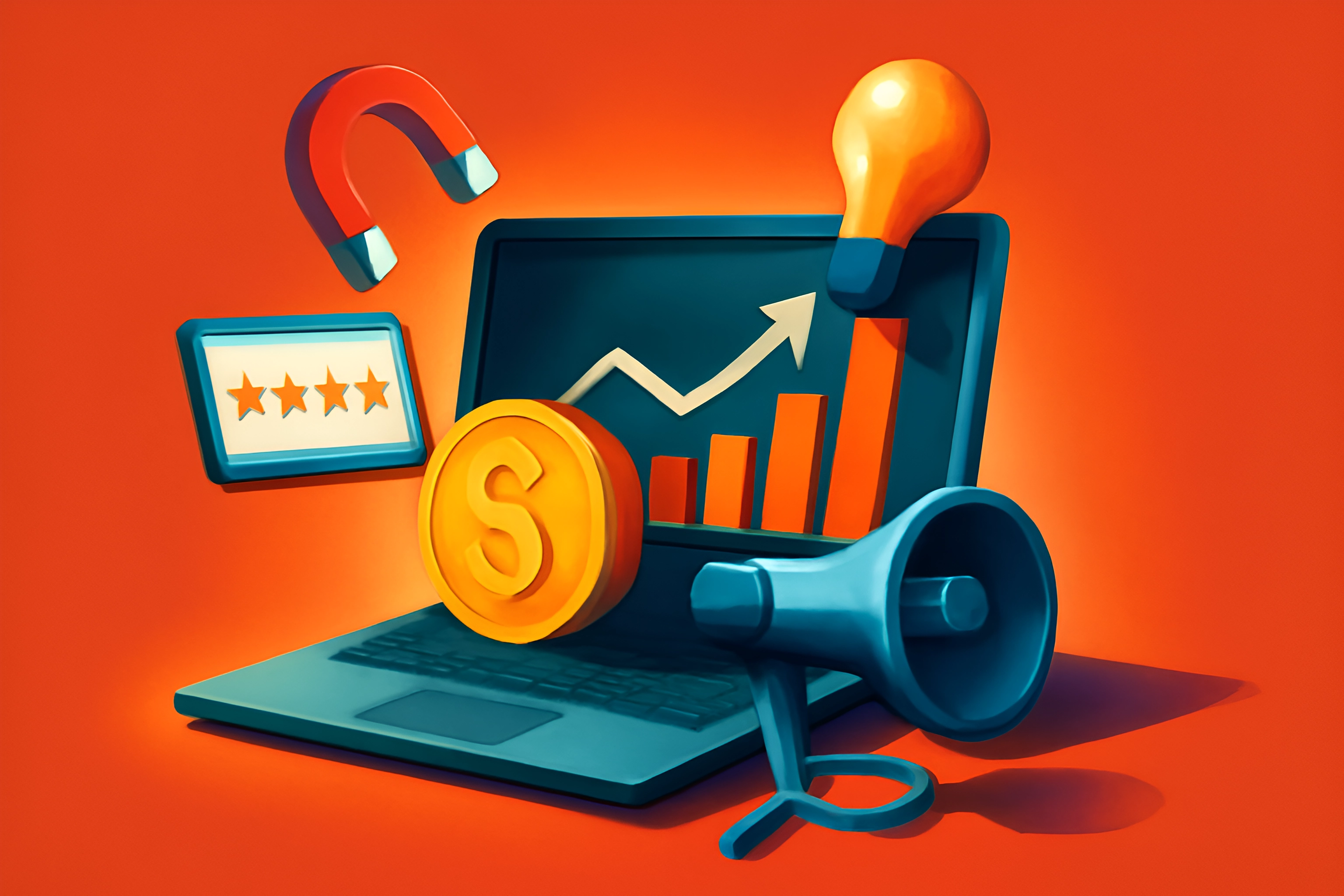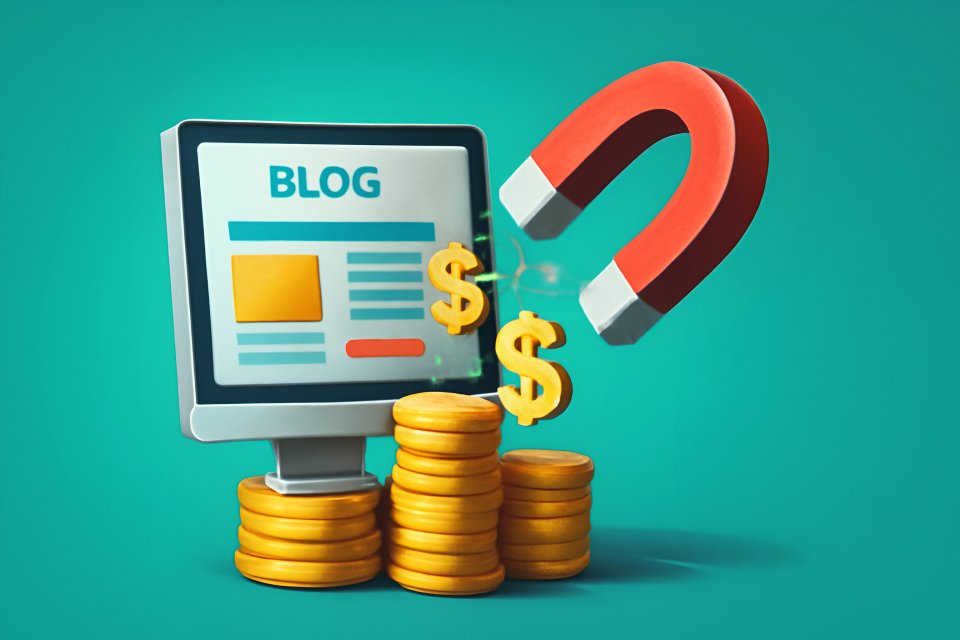
You spend hours perfecting your sourdough starter, meticulously cataloging vintage stamps, or documenting your urban gardening journey. That passion is a powerful force. What if it could do more than just bring you joy? What if it could fund itself—and even grow into a reliable source of income?
So many creators hesitate at the thought of money, fearing it will tarnish the purity of their passion. They worry it’s about "selling out." But monetization isn't about compromise; it's about sustainability. It's about securing the resources to share your passion on an even grander scale, with better tools and more time.
This guide will walk you through proven, authentic strategies to monetize your niche hobby blog. We will show you how to transform your passion project into a source of sustainable income without ever losing the heart of what you do.
The Mindset Shift: From Hobbyist to Creator
Before we talk tactics, we must address the mental block that stops most hobbyists cold. You feel a deep, protective love for your craft, and the idea of turning it into a business feels… wrong. But what if you reframed that thinking?
Monetization is simply an exchange of value. You provide incredible, expert content that helps someone else enjoy their hobby more, and in return, they offer support that allows you to keep creating. As one creator put it, you must get over the fear of monetizing by recognizing that your expertise is a gift worth sustaining.
Earning an income is what gives you creative freedom. It’s the money that buys a better camera to film your pottery tutorials, the premium ingredients for your vegan baking blog, or the plane ticket to that rare book fair. This isn't about getting rich quick; it's about building a self-funding ecosystem around the thing you love most.
The Foundation: What You Need in Place Before You Monetize
Jumping into monetization too early is like trying to harvest a crop you haven't planted. Success requires a strong foundation built on trust, value, and a clear identity. Get these three pillars right, and the income will follow naturally.
A Clearly Defined Niche
Your greatest strength is not your broad appeal, but your laser-focused expertise. A generic "crafts" blog is a drop in the ocean. But a blog dedicated to cold-process soap making for sensitive skin is a lighthouse for a specific group of people with a specific problem.
This hyper-specificity is your superpower. According to industry analysis, a well-defined niche directly impacts blog success by attracting a highly motivated audience and making it easier to rank for valuable search terms. It’s the difference between shouting into a crowd and having an intimate conversation with people who are desperate to hear what you have to say.
High-Quality, Value-Driven Content
Your content is your product. It must be the best, most helpful, most inspiring resource for your specific audience. Before you ask for a single dollar, you must first earn attention and trust with content that genuinely solves a problem or teaches a skill.
This means going deeper than your competitors. Don't just write about restoring classic cars; create detailed, step-by-step photo guides for a specific model's carburetor rebuild. This commitment to producing high-quality content establishes you as an undeniable authority whose recommendations carry real weight.
An Engaged (Not Necessarily Huge) Audience
Forget vanity metrics. A small, loyal tribe of 1,000 true fans who hang on your every word is infinitely more valuable than 100,000 passive followers. Engagement—comments, shares, and email replies—is the ultimate signal of trust.
This is why your email list is your single most valuable asset. It's a direct line to your most dedicated followers, a channel you own completely, away from the whims of social media algorithms. As experts note, all serious bloggers need to build a mailing list because it’s the core of a sustainable, monetizable community.
7 Powerful Niche Monetization Strategies (From Easiest to Most Advanced)
Once your foundation is solid, you can begin layering in revenue streams. The key is to start with methods that feel most natural to your content and audience, then gradually build a diversified portfolio. Think of it as a ladder, where each rung takes you closer to your goal of sustainable blogging income.
1. Affiliate Marketing: The Natural Starting Point
- Best For: Recommending the tools, supplies, and courses you already use and love.
- Getting Started: This is the perfect entry point. You can start by joining large networks like Amazon Associates or more specialized platforms like ShareASale. The real power, however, comes from finding niche-specific programs that align perfectly with your content.
- Hobby Blog Example: A bird-watching blogger writes a detailed review of their favorite binoculars. Within the post, they include a special link to the product. When a reader clicks that link and makes a purchase, the blogger earns a commission at no extra cost to the buyer. It's a win-win that rewards authentic recommendations. For a deeper dive, explore these smart affiliate marketing strategies.
2. Display Advertising: The Passive Play
- Best For: Blogs with growing, consistent traffic that want to earn passively.
- Getting Started: For beginners,
Google AdSenseis the most accessible network. Once your blog reaches higher traffic thresholds (typically 50,000+ monthly sessions), you can apply to premium networks like Mediavine or AdThrive, which offer significantly higher payouts and better ad quality. - Hobby Blog Example: A classic car restoration blog has a high-traffic article on "How to Troubleshoot a '67 Mustang Ignition System." They place display ads in the sidebar and at the end of the article. The income from these ads, while passive, helps pay for hosting fees and new project cars, directly funding future content.
3. Sponsored Posts & Brand Collaborations
- Best For: Blogs with a strong brand identity and a highly engaged, trusting audience.
- Getting Started: Create a simple
media kit—a one-page PDF showcasing your blog's mission, audience demographics, and engagement stats. Start by pitching small to mid-sized brands in your niche that you genuinely admire. - Hobby Blog Example: A vegan baking blogger who has built a reputation for flawless recipes partners with a plant-based butter brand. They create a unique recipe post featuring the product, clearly disclosing the sponsorship. The collaboration feels authentic because it's a brand they would have used anyway, and it provides value to their audience.
4. Digital Products: Package Your Expertise
- Best For: Bloggers with deep, specialized knowledge who can solve a recurring reader problem.
- Getting Started: Pay attention to your comments and emails. What questions do you get asked over and over? Package the solution into a downloadable eBook, a printable checklist, a set of templates, or a short video course.
- Hobby Blog Example: A calligraphy blogger notices beginners always struggle with consistent letterforms. They create and sell a "Beginner's Brush Lettering" PDF workbook with practice sheets and stroke guides. This is a perfect example of one of many digital side hustles that generate extra income.
5. Physical Products & Merch
- Best For: Hobbies with a tangible or artistic output, or a strong community identity.
- Getting Started: For low-risk entry, use a Print-on-Demand (POD) service like Printful. You can create t-shirts, mugs, or posters with clever slogans or designs related to your hobby. For handmade items, a platform like Etsy is the gold standard.
- Hobby Blog Example: A watercolor painting blogger sells high-quality prints of their most popular artwork. Another blogger, who runs a community for Dungeons & Dragons Dungeon Masters, uses POD to sell t-shirts with inside jokes that only their audience would understand, strengthening the community bond.
6. Services: Sell Your Skills
- Best For: True experts who can provide personalized, one-on-one assistance.
- Getting Started: Start small by offering a single, clearly defined service on your blog. This could be a 30-minute consultation call, a project critique, or a freelance service directly related to your hobby.
- Hobby Blog Example: A home-brewing expert with years of experience offers a "Brew Day Consultation" video call. For a fee, they will walk a beginner through the entire process, troubleshooting in real-time to ensure their first batch is a success.
7. Memberships & Communities
- Best For: Advanced bloggers with a highly dedicated and engaged community willing to pay for exclusive access.
- Getting Started: Use a platform like Patreon or Circle to create a private space for your biggest fans. Offer exclusive content, behind-the-scenes access, advanced tutorials, or a private forum for a recurring monthly fee.
- Hobby Blog Example: A board game review blog has a loyal following. They launch a membership community where, for $5 a month, members get early access to reviews, a vote on the next game to be covered, and entry into a private Discord server to discuss strategy with other enthusiasts.
| Monetization Strategy | Best For | Effort Level | Income Potential |
|---|---|---|---|
| Affiliate Marketing | Recommending trusted products | Low to Medium | Low to High |
| Display Advertising | High-traffic blogs | Low (Passive) | Medium to High |
| Sponsored Posts | Strong brand identity | Medium | Medium to High |
| Digital Products | Deep expertise | High (Upfront) | High (Scalable) |
| Physical Products | Artistic/Tangible hobbies | Medium to High | Medium |
| Services | One-on-one experts | High (Active) | High |
| Memberships | Dedicated communities | High (Ongoing) | High (Recurring) |
Building Your Monetization Mix for Sustainable Income
The secret to truly sustainable income isn't picking one strategy; it's about building a diversified mix. Relying on a single source, like ad revenue, leaves you vulnerable. A smart creator layers multiple streams of income that work together.
Start small and build incrementally. Begin with the easiest lifts, like affiliate marketing and display ads. As your authority grows, introduce a digital product that solves a common problem for your readers. This creates a "value ladder," where you offer ways for your audience to get more value from you at different price points.
Most importantly, let your audience guide you. Use surveys, polls, and direct conversations to discover what they need most. When you create products and services that directly answer their biggest challenges, monetization stops feeling like selling and starts feeling like serving. For a practical framework, use this checklist for building a multi-stream income portfolio.
Conclusion: Turn Your Passion into a Sustainable Pursuit
Monetizing your hobby blog is a marathon, not a sprint. It begins with the unshakable foundation of providing immense value and earning genuine trust. From there, it’s about strategically layering in revenue streams that honor your craft and serve your audience.
You don't have to choose between your passion and financial stability. By embracing the mindset of a creator and implementing these authentic strategies, you can build a powerful ecosystem around the thing you love. The goal isn't just to earn—it's to build a sustainable pursuit that funds your creativity for years to come.
What hobby do you blog about? Share it in the comments below—I'd love to see what you're passionate about

















